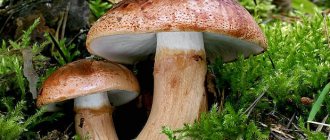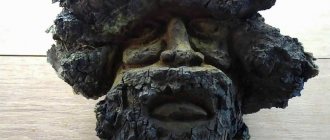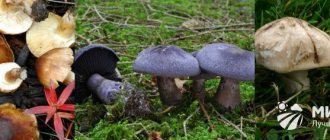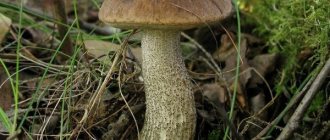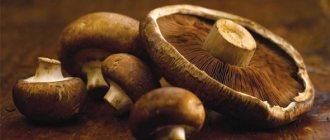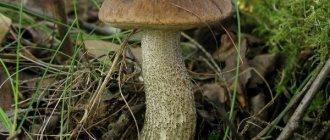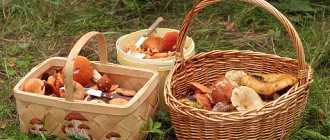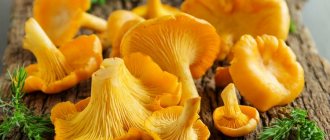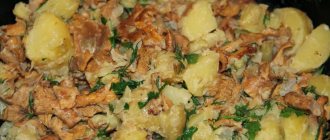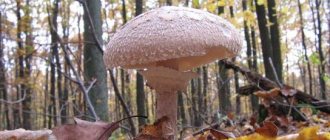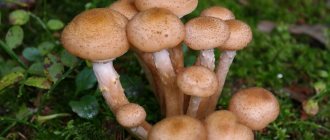In forests of various types, the rubella mushroom, which belongs to the Russula family, is quite common. The Latin name is lactarius subdulcis. It is also known as puta, sweet milk mushroom, and sweetish milkweed. Despite its prevalence, this species is not held in high esteem by most people due to its narrow use in cooking and the assigned category of conditionally edible mushrooms. However, this gift of the forest is quite nutritious, and with proper pre-processing it can be used to make a tasty snack.
Description of the mushroom
Sweet milk mushroom (Latin name Lactarius subdulcis) comes from the genus Mlechnik. Belongs to the Russula family. In Russia it is called the sweetish Milky, Poputa, and the rubella Milky.
A little history
The genus Lactarius was first described by H. G. Person, a legendary botanist from Holland, in 1797. Two years later, the mycologist studied all its representatives and described in detail in a scientific work the determinants of membership in the genus. Among other names for the milkweed there was also rubella.
hat
The diameter of the cap is from 3 to 7 cm. It can grow quite prostrate. Young mushrooms have a brick-red, blood-colored cap. With age, under the influence of sunlight, it fades. The shape changes as it grows. At first it is convex and flat, then funnel-shaped. A pronounced tubercle forms in the middle. Dry and smooth to the touch.
Hymenophore
The hymenophore is the organ of the fruiting body of the mushroom, which is located in the inner part of the cap.
The hymenophore is designed in the form of plates falling onto the stalk. They are located very often, and when pressed they instantly crumble, like russula. The color changes as the mushroom grows: early ones are whitish, mature ones are reddish-brown.
Pulp on the cut
The pulp is reddish-brown, thin, and when cut it releases a white milky juice. With a sweet aftertaste in young mushrooms, it gradually acquires bitter notes.
Leg
The leg is cylindrical, thin (up to 1.5 cm in diameter), 3–6 cm high. Closer to the hymenophore, it becomes light and buffy. Near the mycelium it is brown, brownish, solid. Becomes hollow near contact with the cap. If you look closely, it looks a little crooked.
Kinds
There are approximately 15-18 species of grebes known in nature.
The grebe bird is the most famous of the grebes living in Russia. Dahl in his dictionary mentioned the crested grebe, the horned grebe, the ruby-throated grebe, and the long-eared grebe. In the modern classification, grebes are named differently. They were either renamed or became extinct within a century and a half. By the way, the number of species of these birds has actually decreased over the last century. This is due to human economic activity. The table shows some of the living species of grebes and their distinctive features.
Grebes that feed on fish are larger and have longer necks than those that feed on insects or shellfish.
| Types of grebes | Habitat | External species differences | Size, weight | What does it eat? |
| Pied-billed or Caroline | Both American continents, from southern Canada. This bird is not found in Arctic Northern Canada or Alaska. | In summer, a black border appears on the elongated, pointed beak, which is how it got its name. The main color of the feathers is dull brown. | The body is elongated by 31-38 cm, weight 300-600 g. Wingspan up to 60 cm. | Mainly aquatic insects |
| Small | The southern part of Eurasia and almost the entire African continent. | The back is dark brown, almost black, the plumage of the belly is silvery. The beak is chocolate-dark with a light tip. In summer, part of the head and neck are painted chestnut with a copper tint. By winter, the chestnut plumage disappears. | Weight approximately 100-350 g. Wing length is 9-11 cm. Egg size is 38-26 mm. | Insects, their larvae, mollusks, for which it dives to the very bottom of the reservoir, small fish |
| Grey-cheeked. In Russia and Belarus it is under state protection and is included in the Red Book. | It lives on almost all continents of the northern hemisphere, choosing forest zones. For nesting, it prefers ponds with dense vegetation near the banks. | The back of the neck, back, and part of the wing are blackish-brown. The feathers on the belly and cheeks on the head are grayish-white. The front part of the neck is orange-rusty in color. | The body is 42-50 cm long. Weight is 0.9-1 kilogram. The length of the wings in flight is 80 -85 cm. The eggs are 50x34 mm. | It feeds on insects, roaches, and fry. |
| Red-necked or horned | In Eurasia and North America. The inhabitants of the subarctic south and temperate north are migratory. | In autumn and winter it has a light gray even color. Only on the head is a dark gray cap and the front of the neck is white. In spring and summer, the Rufous-necked Grebe changes: reddish-rufous feathers appear on the head, neck and sides. | Body length - 20-22 cm. Weight -310-560 g. The average egg size is 48x30 mm. | It feeds on insects and, in winter, small fish. |
| Black-necked or long-eared | It lives on all continents except Antarctica and Australia. Birds living in the north fly south for the summer. | In spring and summer, the head and neck are black with a charcoal sheen. Near the eyes, like eyelashes, there are yokes - golden feathers, clearly visible against the charcoal background. By autumn, the plumage fades and acquires a gray tint. The back is black-brown, the sides are rusty, the belly is light. | Body length – 28-34 mm; Weighs 300-600 g. The average egg size is 46x30 mm. | Mainly arthropods. |
| Clark's grebe | Lives mainly on the west coast of the North American continent | Clark's grebe is much larger than the Russian grebe. The chicks hatch uniformly, dirty white in color, which also distinguishes them from other types of grebes. Adults have a gray-brown back and a snow-white belly. | One of the largest in the grebes family. Body length 55-75 cm, weight 700-1700 grams. Wingspan -90 cm. | It pierces its prey with its beak, like a dagger. Feeds on fish. |
Time and place of fruiting
Most often, the mushroom can be found in a birch grove, among mosses, and in coniferous forests. Unpretentious, but prefers to settle in damp soil. Rubellas grow in groups and bear fruit from early June to October.
They end up in mushroom pickers' baskets closer to August, after heavy summer rain. They can withstand light frosts, so you can find rubella until the first snow appears.
Interesting! Most of the laticifers grow in the Far East, the Urals, Siberia, and the Crimea. Mushrooms are located close to the foot of the mountains.
Where can I find
In central Russia, rubella is found everywhere, all you have to do is look for it carefully. Mushrooms, as mentioned above, are quite unpretentious, so they actively bear fruit, and choose both broad-leaved forests and coniferous forests for their growth. They can be found among mixed forests. Look carefully where moss predominates. The mushroom loves to settle on it.
It loves shade, but so that the sun's rays shine through it, so it chooses not densely planted forests. Can also be found in clearings and forest edges.
Sometimes found along the banks of rivers and ponds. In general, the fungus settles where it finds acceptable conditions for existence.
In places where conditions for some reason are not suitable for its growth, it bears fruit for one, maximum two years, after which the mycelium dies off.
For those interested in Lactárius subdúlcis, it is on Wikipedia.
Growing
Growing rubella at home is possible by purchasing mycelium in a specialized store. The estimated cost per bag is $6. 100 g of mycelium is enough for 2.5 m².
Growing method:
- Dry the soil near the roots of the tree and make a depression of 5–15 cm.
- Fluff up the planting site.
- Open the mycelium packet and scatter it evenly over the surface of the pit.
- Mix garden soil with humus in a 1:1 ratio. Cover the hole with it.
- Water the bed (water consumption - 10 l).
- The first mushrooms will appear after 3 months of planting. If you properly care for rubella, you can expect a regular harvest 4 times a year (spring and autumn).
Note! If the summer is dry, watering should be done frequently. For 1 m² you will need 15–20 liters of liquid.
Loader white
The mushroom body of Russula delica or the white cap (as the name suggests) is mostly white underneath, with tan or brownish markings on the cap. In the ground, the mushroom sits on a short, strong stem.
The mushroom is edible, considered bad in taste in Europe, in Russia it is eaten with pleasure, and mushroom pickers compare the taste with the taste of common milk mushroom. The mushroom is difficult to find.
It is buried in the ground, covered with forest debris.
It is often confused with other white Russula species and some white Lactarius species. But in fact, white podgrudok belongs to the genus of Russula mushrooms. When cut, the fruiting body of the mushroom does not release milky juice. The white podweed was first described by the Swedish mycologist Elias Magnus Fries in 1838, its specific epithet delica in Latin meaning “weaned.”
The basidiocarps (fruiting bodies) of Russula delica seem reluctant to leave the mycelium and the mushrooms are often found half-buried and sometimes growing hypogeneically. As a result, the caps often trap surrounding leaf debris and soil on their rough surfaces as the fungus grows.
White cap - hat
It has a noticeable size, from 8 to 20 cm in diameter. At first it is convex with a central depression, and quickly develops into a funnel.
The cuticle is white, creamy white, with buffy-yellowish tones and more prominent spots on mature specimens. The flesh of the cap is dry, thin, matte, difficult to separate, smooth in young specimens and rough in mature specimens.
The edge of the cap is spiral, lobed. Often the cap is strewn with traces of dirt, grass and leaves.
The gills descend to the stalk, are fragile, wide, ventricular, moderately dense, with lamellae. Their color is white, slightly creamy; the plates turn slightly ocher when damaged. Sometimes they secrete clear juice, like drops of water.
Cylindrical, short relative to the diameter of the cap, from 3 to 7 in length and from 2 to 3 cm in diameter, hard, fragile, solid, without a central cavity. The color of the stem is white, turning creamy at maturity.
Dense, brittle, white, acquiring a yellowish tint over time. Its smell is fruity in young specimens and somewhat unpleasant, fishy in overripe mushrooms. The sweet taste becomes somewhat spicy, especially in the gills, when ripe. People find the white podgrudok spicy and pungent in taste.
Chemical reaction: Ferrous sulfate changes the color of the flesh to orange.
Spores: creamy white, ovoid, with a delicate warty pattern, 8.5-11 x 7-9.5 microns.
The fungus is distributed in temperate zones of Europe and Asia, the Eastern Mediterranean. It is a thermophilic species, emerging during hot periods often half-buried after summer and autumn rains. Prefers deciduous forests, but is also found among coniferous plantations.
Some people find it tasty even when eaten raw, others find the mushroom to be edible but unpleasant, with a poor taste. In Cyprus, the Greek Islands, Russia, Ukraine and other countries, huge quantities of Russula delica are collected and consumed every year. People marinate mushrooms in oil, vinegar or brine after boiling for a long time.
Another feature that limits its use in cooking is the difficulty of cleaning; the caps are almost always dirty, so you have to clean them and wash them thoroughly. In addition, this mushroom appears in the forest when it is still warm, and insects lay larvae in it.
This mushroom will not cause harm after heat treatment and long-term salting/marination. But, like all pickled foods, the high-protein mushroom will have a negative effect on the kidneys if you eat too much at once.
White mushrooms will not harm you if you follow the rules for preparing and consuming wild mushrooms.
The greenish platelet pod is very similar and is often confused with the white pod. They are distinguished by a turquoise stripe where the gills are attached to the cap and an unpleasant, pungent odor.
Loader greenish-platelike
Skriptsa secretes a bitter milk, which insects do not like, so wormy fungi do not occur. The milky juice makes this mushroom conditionally edible, but not poisonous.
False doubles
By chance, rubella can be confused with milkweed (Lactarius volemus), popularly called bitterweed, as well as with Milkweed, which is not eaten. Look at the photo - it shows all three mushrooms.
The photograph does not convey all the features. A detailed comparison of mushrooms can be found in the table so that you can easily identify the species.
| Redneck | Spurge | The sharpest milkman | |
| Edibility | Yes | Yes | No |
| Color | Rich dark red, brown | White, may have pink spots on cap | Ocher |
| Size | Medium, fine fruiting body features | Large, fleshy mushroom | Large hat on a thin stem |
| Leg | Short | Long | Low, with a whitish coating |
| hat | Thin, funnel-shaped. There is a pronounced tubercle. | Dense, fleshy, small tubercle | Concave, with wavy edge and concentric zones |
| milky juice | Released in moderate amounts, bitter | Flows profusely, caustic | Faintly stands out, with bitterness |
Watch a video comparison of Rubella and Camphor milkweed
What can bittersweet be confused with?
Bittersweet is similar to many other mushrooms, so before putting the mushroom in a basket, you should pay attention to its cap; if there is a tubercle in the middle of the cap and juice is released, then you can safely take this mushroom with you. Bittersweet can be easily confused with the following mushrooms:
Bittersweet can be easily confused with the following mushrooms:
| Name of the mushroom | Description |
| Camphor mushroom | It is an edible mushroom. The smell of milk mushrooms is similar to dry tree roots. |
| Orange mushroom | The cap of this mushroom is chestnut in color and its stem is the same color. |
| Swamp milk mushroom | It also looks like bitterweed, the color of the cap is the same, it can be found near a swamp in pine forests. |
| Liver milkweed | It is considered an inedible mushroom; it differs in the color of its juice: in the milkweed it is yellow, and in the bitter mushroom it is reddish. |
| Gladysh | It is very similar to bitterweed, but there is no tubercle on its cap, and the color of the cap is chestnut-red. |
Also, an inexperienced mushroom picker may confuse bitters with:
- earrings;
- brown milkmen;
- rubellas;
- smoothies.
Evaluation of taste qualities, medicinal properties, benefits and possible harm
Rubellas are not among the favorites of mushroom pickers, and sometimes this is undeserved. Basically, they are cut off if the mushroom hunt is unsuccessful. The taste of the pulp is sweetish, and the aroma is indefinite,
weak. The juice is bitter and tasteless, so the taste is rated 4 points out of 5. It belongs to the conditionally edible mushrooms, but is considered suitable only for pickling.
The mushroom has beneficial properties:
- contains a natural antibiotic;
- prevents the development of sclerosis;
- calms the nervous system.
This is interesting! On the basis of rubella, medications are made for the treatment of cholelithiasis. The mushroom is not used in folk medicine.
If milk is prepared incorrectly, it can cause damage to health. Without soaking and boiling the rubellas first, there is a risk of getting poisoned. Do not neglect the rules and stages of processing.
Similar species
Little Red has a lot of doubles. These species are not only similar in appearance, but also in some other characteristics. Fortunately, rubella does not have poisonous counterparts. This means that you can collect it without fear for your life and health. What species are these mushrooms similar to?
Gorkushka
Bittersweet is not as common a mushroom as rubella. It also belongs to the genus “milky”, the family “russula”.
The largest concentration of these mushrooms can be found in the northern part of Russia, namely in Karelia.
The mushroom is edible and belongs to the fourth category. He has a bright red neat hat that rises up over time. And also a red, but somewhat light leg. Mushroom growth time is from mid-June to September. In the middle of the cap there is a characteristic tubercle, which distinguishes bittersweet from rubella.
The taste of this mushroom is quite bitter, but after proper heat treatment it becomes acceptable for cooking.
Spurge
Not many people know that under the name “euphorbia” there is not only a plant, but also a fungus. However, it is rare, since it is very unpretentious in its growth. The mushroom is edible and has a fleshy cap, which can reach 15 cm in diameter. It is quite convex, rarely flat.
There is no mucus on it, so the cap sometimes cracks when exposed to direct sunlight. The pulp is quite dense, a knife and fingers can easily sink into it. It prefers coniferous, mixed and deciduous forests for growth, and also spreads along roads.
Its taste is acceptable, however, it does not have the most pleasant aftertaste. The mushroom has a bright orange color, so it is clearly visible from a distance even under a carpet of leaves.
It got its name because of the white juice that is released when the pulp is cut in half. Finding this mushroom in the forests is not so easy. It is common, but still somewhat unpretentious, looking for ideally suited soil and conditions for growth. If they do not meet the requirements, they quickly die off. Therefore, this mushroom is very difficult to find. However, it is widely used for medicinal purposes, so traditional medicine respects it very much.
Homemade recipes
You can pickle rubella mushrooms by first soaking and boiling them. Their use in cooking is very limited; they are only suitable for pickling; they cannot be fried.
Primary processing
Only the caps of the seaweed are used for food; the stems must be removed. They are fibrous and unfit for consumption. They can be cut off in the forest without bringing them into the house. To get rid of bitterness, rubella is soaked for 48 hours or boiled for 2 hours.
Cooking
Boiled rubellas are not suitable for food; this is an intermediate stage before salting.
Ingredients:
- 2 kg of mushrooms;
- 50 g salt;
- 3 liters of water.
Preparation:
- Place a saucepan of water on the fire and bring the liquid to a boil.
- Place pre-washed mushrooms in it. Add salt.
- Cook over low to medium heat for 2 hours.
- After time has passed, rinse the rubella under running cold water.
Pickling
Some chefs claim that rubellas can be pickled. However, we strongly do not recommend doing this, because the mushroom contains poisonous substances for the human body.
substances, and how they will behave if you prepare a marinade and stew mushrooms in it is unknown. Sweet milk mushrooms should not be pickled; the health consequences have not been fully studied.
Freezing
Sweet milk mushrooms are not suitable for freezing. Only unwashed mushrooms are sent to the freezer, because when they come into contact with water, they absorb it. Rubellas must be boiled and washed.
Hot salting
After salting, rubellas become crispy and fragrant. You can try the preparation 2-3 weeks after preparation. Use as a stand-alone dish or roast in addition to vegetables. Before serving, boiled potatoes will come in handy.
Ingredients:
- 2.5 kg of boiled mushrooms;
- 100 g salt;
- head of garlic;
- 8 leaves each of currants and cherries;
- 5 sprigs of dill;
- 1 horseradish leaf.
How to pickle rubellas:
- Peel the head of garlic and cut into small slices.
- Place the greens at the bottom of the bowl and add a tablespoon of salt.
- Layer mushrooms, dill, garlic.
- Make a squeeze: place a flat plate on top of the mushrooms, place a jar of water on top. Leave it in this form for a day.
- Transfer the mushrooms into glass jars and cover with a nylon lid. If desired, you can add fresh herbs to the pickling.
- Place the sealed jars in a cool, dark place.
Cold pickling of rubellas in jars
A delicious appetizer is prepared with horseradish. The salted mushroom is served with sour cream, generously sprinkled with fresh herbs.
Products:
- 500 g mushrooms;
- 30 g horseradish root;
- 20 g salt;
- 2 cloves of garlic;
- 1 bay leaf.
Preparation:
- Soak the peeled mushrooms in water for a day or two.
- Cut the cabbage, horseradish and garlic into small slices.
- Mix the products, add spices.
- Place the components in jars and press down with pressure. Place in the refrigerator for a day.
- Close the jars with nylon lids and lower them into the cellar. The preparations can be made after 30–40 days with fried or boiled potatoes.
Canning for the winter
Rubellas are not preserved for the winter; they are used exclusively for pickling.
Frying and drying
You cannot fry or dry these mushrooms, as you may get poisoned. However, some chefs claim that if the rubellas are thoroughly soaked and boiled, finely chopped, they are suitable for frying.
Video reviews
A selection of videos with descriptions and recipes for preparing mushrooms
Mushroom experts of the Russian Federation TV
White cobweb bulbous
The bulbous white web is a conditionally edible agaric mushroom that grows from mid-August to the end of October in mixed forests and pine forests. It usually grows in small groups, but you can also find single mushrooms. The bell-shaped cap of young mushrooms becomes convex over time, with a wide tubercle. It is painted light beige or brownish-red. Its diameter ranges from 5 to 9 cm. Along the wavy edge of the cap there is decoration in the form of scraps of a thin white blanket, similar to a cobweb. On the inside of the cap there are narrow plates, the whitish color of which changes with age, first to clay, and then to brown. The stem of the mushroom is round, painted white, its height is approximately 6 cm, and its diameter is 1 cm. On top it has a needle-like cobweb ring. The thicker base of the stalk forms a large tuber. The flesh of the cap is fleshy, soft, tender to the touch, white in color, almost odorless. The pulp of the leg is watery, with a fibrous structure, white in color with a grayish tint. Only the caps are eaten. They are used to prepare various dishes, but require preliminary boiling. Suitable for pickling.
Interesting Facts
Mushrooms can be good and bad at the same time. For example, rubella helps the plants surrounding the mycelium to obtain nutrients from the soil. At the same time, they have the ability to destroy wood and infect crops.
On the Crimean Peninsula the milkweed is highly respected. Mushrooms are carefully collected, pickled and sold to tourists. This way you can bring an edible souvenir from your trip. Poputa is only suitable for salting.
Let's sum it up
If you know how to properly handle a conditionally edible mushroom, you can prepare a truly delicious snack from it. Rubellas cannot be fried, but it is quite possible to add salt in a jar. Insufficient processing causes gastrointestinal disease.
Information sources
- Lesso T. Mushrooms, key / trans. from English L. V. Garibova, S. N. Lekomtseva. - M.: “Astrel”, “AST”, 2003. /
- Udu J. Mushrooms. Encyclopedia = Le grand livre des Champignons / trans. from fr. - M.: Astrel, AST, 2003. /
- Serzhanina G.I. Hat mushrooms of Belarus. - Minsk: Science and Technology, 1984. / Pers., Synopsis methodica fungorum: 433 / Pers., Synopsis methodica fungorum: 433 (1801).
Crispy porcini mushrooms: marinating recipe for 1 liter of water
Our next recipe involves sterilizing the workpieces. These mushrooms do not need to be stored in a cool place. You can also place them in a regular pantry at room temperature. They won't spoil.
Ingredients:
- White mushrooms
- Black peppercorns - 5-7 pcs./1 jar
- Allspice peas - 2-3 pcs./1 jar
- Bay leaf - 2 pcs./1 jar
Marinade for 1 liter of water:
- Salt - 2 tablespoons
- Sugar - 1 tablespoon
- Vinegar 9% - 75 ml (5 tablespoons)
Preparation:
1. Start by cutting clean, washed mushrooms. Separate the caps from the legs and cut everything into equal parts. If you come across small specimens, you can leave them whole. Then put them in a saucepan, cover with water and add 1 tablespoon of salt. Place on the fire and bring to a boil. After this, cook them for 20-30 minutes. When they are cooked, drain the water through a colander and rinse under running cold water.
2. For the marinade, pour water into a saucepan and put on fire. Add salt, sugar to boiling water and mix thoroughly. Pour vinegar here, bring to a boil again and turn off.
3. Place a bay leaf, a few black peppercorns and allspice at the bottom of clean, sterile jars. Then fill to the top with mushrooms, again add a few peppercorns and a bay leaf. Pour in the hot marinade and cover with a lid.
Next, lay a cloth napkin on the bottom of a wide pan, place filled jars there and fill with hot water up to the hangers. Place on the fire and bring to a boil. After this, boil for 20 minutes.
4. After sterilization is complete, carefully remove the jars (so as not to get burned) and roll up (screw) their lids. Turn them over and leave them to cool completely at room temperature. Then take it to your bins for storage. These pickled porcini mushrooms will delight you in the winter. They can be opened and enjoyed both during an everyday meal and laid out in front of guests on a festive table.
Milkman
| Group: | Lamellar |
| Records: | Brown |
| Color: | Brown or dark ocher |
| Info: | The plates darken when pressed and release juice |
| Department: | Basidiomycota (Basidiomycetes) |
| Sub-department: | Agaricomycotina (Agaricomycetes) |
| Class: | Agaricomycetes (Agaricomycetes) |
| Subclass: | Incertae sedis (uncertain position) |
| Order: | Russulales |
| Family: | Russulaceae (Russulaceae) |
| Genus: | Lactarius (Millary) |
| View: | Lactarius volemus (Milkweed) |
Refers to edible mushrooms of 3 or 4 categories of nutritional value (according to various sources). It is believed that milkweed can be eaten raw, but many mushroom pickers are put off by the herring smell that characterizes mature specimens. In the West it is considered a delicacy.
Description
The milkweed is distinguished by its abundantly secreted juice, which quickly thickens and forms white drops on the surface of the mushroom.
hat
The cap of the milkweed is very thick, often irregular in shape, with cracks in mature mushrooms. It reaches 15 cm in diameter. The surface is dry, evenly colored brown or dark ocher. Small milkweeds have a convex cap, and during growth it turns upward and resembles a funnel. The edges of the cap of both young and adult specimens are curved downwards.
Leg
The leg of the milkweed is relatively thin (no thicker than 2 cm in diameter), approximately 10 cm in length. It has the shape of a cylinder. The color is approximately the same as the hat or a little lighter. Often there is a swelling in the middle.
Spore-bearing layer
The hymenophore or spore layer of the milkweed consists of plates. The plates are slightly lighter in color than the mushroom itself. If you press on them, the plates become darker in color.
Pulp
The flesh of the red-brown milk mushroom or milkweed is yellowish, hard and brittle. It exudes juice, initially white, but quickly darkening in air to brown. In addition to a change in the color of the juice, it also thickens and becomes viscous. Overripe specimens have the smell and taste of stale herring.
Spore powder
Euphorbia plates contain white spore powder. The spores are round and small. Individually they are colorless, but in large numbers they appear white.
Spreading
Milkweeds can be found in both deciduous and coniferous forests. They grow both individually and in groups. Most often they can be seen near roads, in mountainous areas, along paths. The milkweed especially loves damp places and the proximity of rotten stumps and moss. Euphorbia is more common in southern Russia.
Similar species
Euphorbia is not similar to poisonous mushrooms.
Here are some of its “doubles”:
Milky hygrophoroid
It differs from milkweed in its sparse arrangement of plates. It is found very rarely, mainly near oak trees. Edible too.
Milky neutral
This mushroom is browner with dark areas. Its juice, unlike milkweed juice, is yellow. Edible.
Milky gray-pink
Has colorless juice. The smell is reminiscent of hay. It is conditionally edible precisely because of its specific smell.
It has a more orange color and a “hairy” stalk. Turns green when cut. Edible.
An experienced mushroom picker can easily distinguish the spurge mushroom from the rest. Moreover, it comes across quite rarely.
How to distinguish molokanka from milk mushrooms
The main trouble for a novice mushroom picker is to collect a full basket of pseudo mushrooms, brag to neighbors, spend time preparing, and then shamefully throw the harvest in the trash. Finding them is much easier: experienced “hunters” pass by without paying attention to these mushrooms. So you need to know the special signs that the Molokan woman can boast of. The mushroom really looks like a milk mushroom, but it can still be identified.
Firstly, the milk mushroom is fringed, with concentric zones, and the “fake” is smooth. Secondly, the “milk” secreted by milk mushrooms quickly turns yellow in the air. Violin juice retains its original color. Thirdly, the pulp of molokanka is denser and drier. And the caps of the mushrooms, despite the striking similarity, have slightly different shapes: the edges of the mushrooms are slightly turned down, and the edges of the mushrooms are slightly turned up.
Dried mushroom powder as a seasoning
There is a time in autumn when champignons are comparatively cheaper. They are sold by weight. At this time, in addition to preparing them in decoction and fresh, there is another method of preparation, which often turns out to be very useful.
Fresh champignons must be sorted out, cut off the tips of the roots on which the soil lies, and thoroughly wiped with a piece of flannel, a soft brush or a dry soft towel. Then place them on an iron sheet or baking sheet, on a layer of clean straw, in one row, and not at all on top of each other, and put them in the oven to dry. This is best done in the evening, when the stove is no longer on.
If the champignons are not dry one night, repeat the same the next day. When the champignons are completely dry, crush them in a mortar and, sifting through a metal sieve, pour into a glass jar, seal with a stopper and keep in a dry place. This powder can be used for gravies, sauces and as a seasoning for other dishes.
